Just before Christmas, a cool package arrived in the mail: it was my framed Certificate from the Sustainable Preservation program I’ve been taking via eCornell. In September, I shared the news that I was excitedly going back to school by enrolling in the certificate program, led by Cornell University’s College of Architecture, Art, and Planning. I knew it was going to be an amazing learning opportunity, but I didn’t quite expect the ‘aha’ moments to be so useful in the face of the many projects we have ahead of us here at the house. And yet, in between classes and assignments, while planning for the upcoming reno/restoration work, I found myself thinking differently about a lot of it.
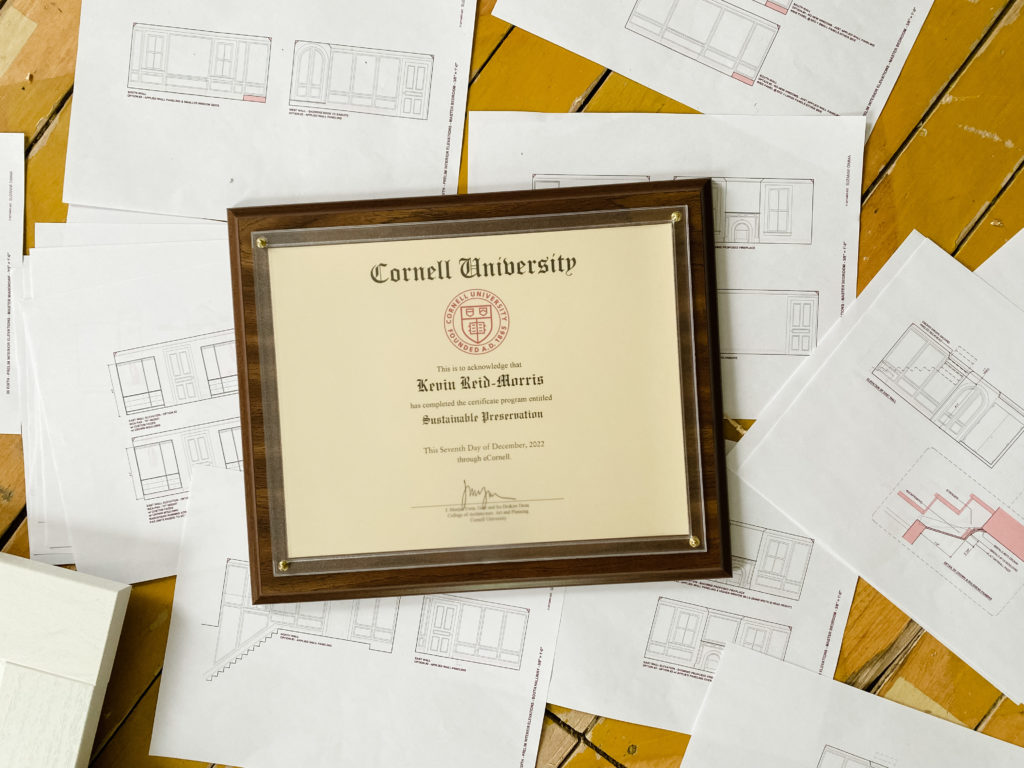
My Cornell University Certificate in Sustainable Preservation! Perfectly timed with all the planning we’re doing for the restoration of the house.
The program did an amazing job of introducing restoration & sustainability tools through case studies. The culmination of each individual course was based on looking at a real building or project and using the lenses of both preservation & sustainability to make recommendations for that building, its occupants, and the community.
Applying it in real time
Around the time the program was starting, Sarah and I had also been interviewing contractors for the restoration work we’re planning for 2023 at the house. We were eager to bring on help to kickstart our own project here at home, especially after a few false starts. Back in spring, the drain pipe defect left behind by previous owners meant forking out a huge chunk of our reno budget and time. Then we spent months in talks with a TV network about a possible show that would focus on the transformation of the house. After that didn’t move forward, we turned to meetings with contractors, ultimately narrowing to a final few.
Just getting to the starting line was (is) feeling exhausting. For one, it feels like its a full time job just getting a plan in place. More than that, each option on the table for us has often felt like too big a compromise in one area or another.
While the TV show would have accelerated things (8-11 weeks of filming and the promise of a shiny, completed house at the end!), we knew deep down we’d be sacrificing the hard preservation work that takes time, attention, and research. I think we dodged a bullet there and will be way happier with the outcome.
Then the contractors we ended up interviewing – even despite saying they’ve done heritage work – were almost scarier. One boldly asserted that they would “update all the old mouldings to new ones for us.” Another came by with their right-hand guy to cut open a wall so we could better see a structural detail. Upon hitting the wood lath behind the original plaster, he remarked something to the effect of “what is that?”. That same contractor’s structural engineer declared the original 1904 fireplace would need to be demolished to make way for a support post. Multiple bullets dodged.
In between all these meetings with contractors, producers, trades, and engineers – I worked away at the Sustainable Preservation Certificate Program over 12 weeks. And I am so glad the timing worked out that way, because I think it’s led us to make the best possible decision for how we go about restoring the house in a way that aligns to our values.
Language, Tools, & Confidence
Sometimes I think we know deep down that we value something, but we either haven’t articulated it yet or need that value to be challenged to really crystallize it. For example, the contractor who suggested all the original doors and casing trim wouldn’t be worthwhile re-using. That made us realize just how important those things are, and motivated us to fight even harder to ensure they are preserved and restored.
The eCornell Sustainable Preservation Certificate Program helped crystallize all this. Sure, we knew we loved old houses and all the historic value within. And no doubt we’ve had a growing passion and commitment to sustainability. The question we were struggling with was: how do we live that out and put it all into action?
In the nick of time, we feel like we got the language, tools, and confidence to begin answering lingering questions about how we are going to do this house justice:
- How do we find the right partners to work with us who actually understand preservation and sustainability values?
- How do we identify carbon and embodied energy in what exists in the house?
- How do we make use of those materials and not discard them?
- How do we do preservation in a way that doesn’t make the house feel like a stuffy museum?
- What funding sources can we tap to help do this better?
- How do we identify, document, and inventory the parts of the house we’ll reuse in the renovation?
- For things we can’t perfectly restore or preserve, what are our options for still honouring the original design of the house?
- If we can’t take on the restoration of an element today, how do we work our way ‘around it’ so it’s still an option to restore in the future?
- How do we communicate all of this so that trades, contractors, neighbours, funders, and spouses (lol…) understand what we’re trying to do here?
Each time I finished one of the courses in the program, I found myself able to answer one or two more of these questions about our project. And each subsequent meeting with trades, engineers, designers, I found myself more confident in how I worked with them, what questions I asked, and even the things I felt comfortable pushing back on.
The experience of Dr. Katelin Olson – leader of the course and faculty member at Cornell’s Architecture, Art, and Planning College – was amazing. All the lessons, case studies, downloadable templates, and videos were all steeped in her personal and professional experience. Dr. Olson grew up in a Crafstman home in California, then went on study preservation and planning, and has a crazy cool portfolio of dilapidated properties in Ithaca, New York that she’s been involved in rehabilitating.
Accelerating our Restoration
So, we took a couple of days off over Christmas and by Boxing Day were back into things with fresh energy, inspired by the program. Over the last few weeks, that means we’ve actually done a LOT to peel back the layers of the house, inventory a lot of the existing materials, understand what’s here to preserve / restore, and get a new set of trades / contractors through to get their reactions. It’s been a lot of work, but exciting to think each step is getting us closer! Here’s what we’ve been up to:
- We carefully stripped all the dining room and drawing room wallpaper, revealing the original 1904 horsehair plaster in the dining room, including some original writing on the walls by the people who papered it
- Dismantled all the 40/50’s (?) built-ins around the fireplace, letting us discover the original footprint of the mantle and finally let the room breathe with its natural footprint unencumbered by bad built-in shelves
- Did some investigation of the enclosed and stone-clad front porch area, helping build our hypotheses that the roof is original and the old porch posts may just be inside the stone ones
- Uncovered the original pine tongue & groove flooring in the old servant’s quarters, including the lead-plumbed wash station that was there (and inactive pipes still between the floorboards!)
- Ripped up the bad 90s carpet on the original front staircase, revealing the beautiful patina of 120+ years of wear and tear
- Dug deeper into the Ontario Archives to get a more granular understanding of early ownership (excitedly waiting for some scans to come in that they had to retrieve for storage!)
- Successfully had our house accepted as one of 20 homes in Halton Hills for a Retrofit Pilot Program utilizing long-term zero interest financing for efficiency measures as part of our restoration
- Went back to the drawing board on contractors and trades and we’re very optimistic about a terrific old-house-loving local contractor who gets the partnership, creativity, and restoration mindset we’re looking for. Hopefully an update there soon!
Lots of this we’ve shared over in our Instagram stories and will be kicking those into gear beginning this week as we start to show off that progress after 2 weeks off over the holidays.
PLUS – we’ve got a really great restoration project happening next weekend that we can’t wait to share more about. Hint: we’re so excited we can’t shutter up about it! 😉
2023, here we come! We can’t thank eCornell enough for the amazing experience during the Sustainable Preservation Certificate Program. We feel like we took our preservation expertise from ‘weekend warrior’ to a whole new level of professionalism and confidence, guided by their amazing instructors, peer-based learning model (super interesting people in the program!), case studies, and a whole suite of tools & templates that we’re using as we speak in our own house.
—
Disclaimer on my relationship with eCornell: Kevin’s enrolment in the certificate program was sponsored by eCornell in exchange for writing about his learning experience.
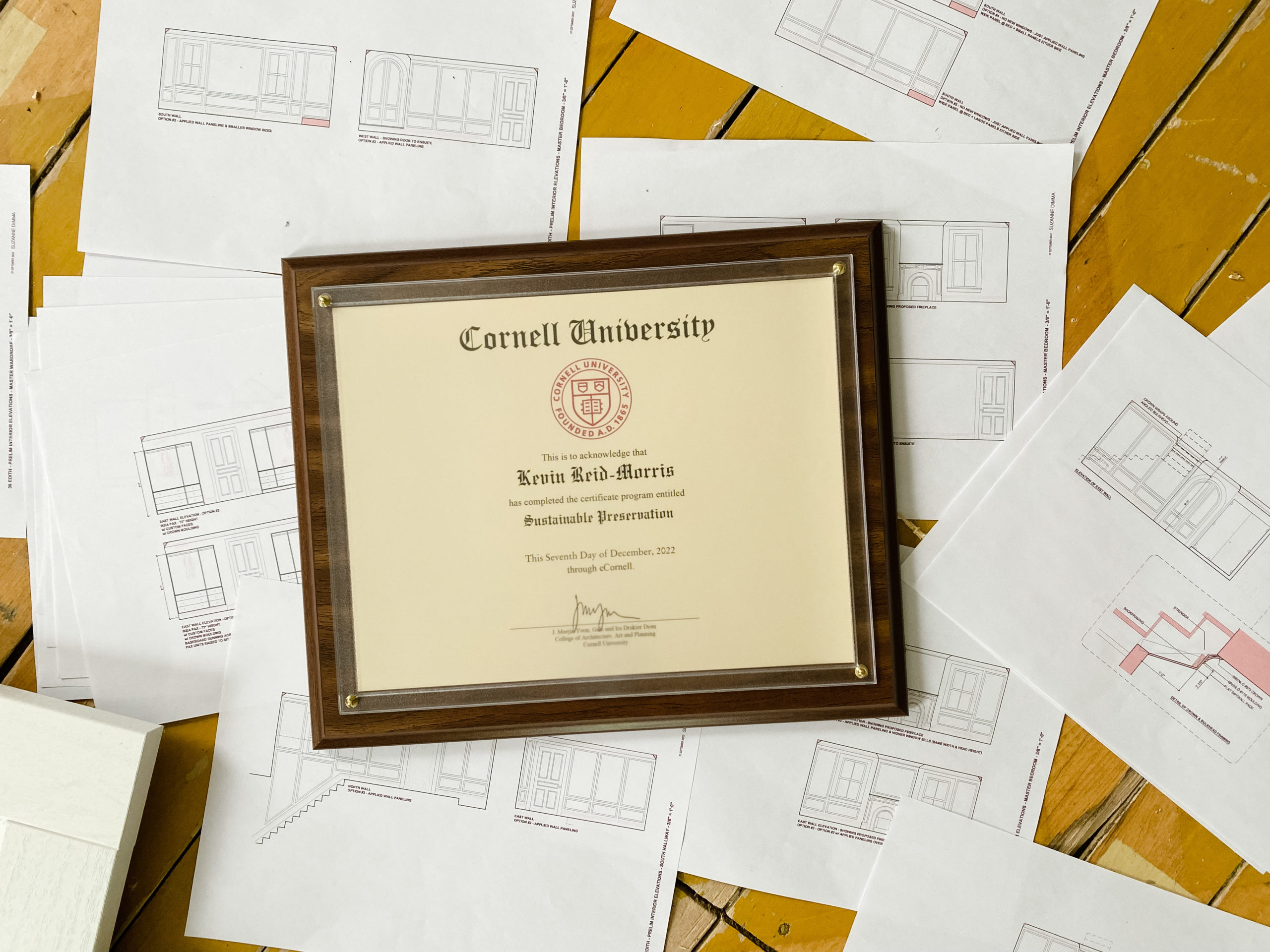
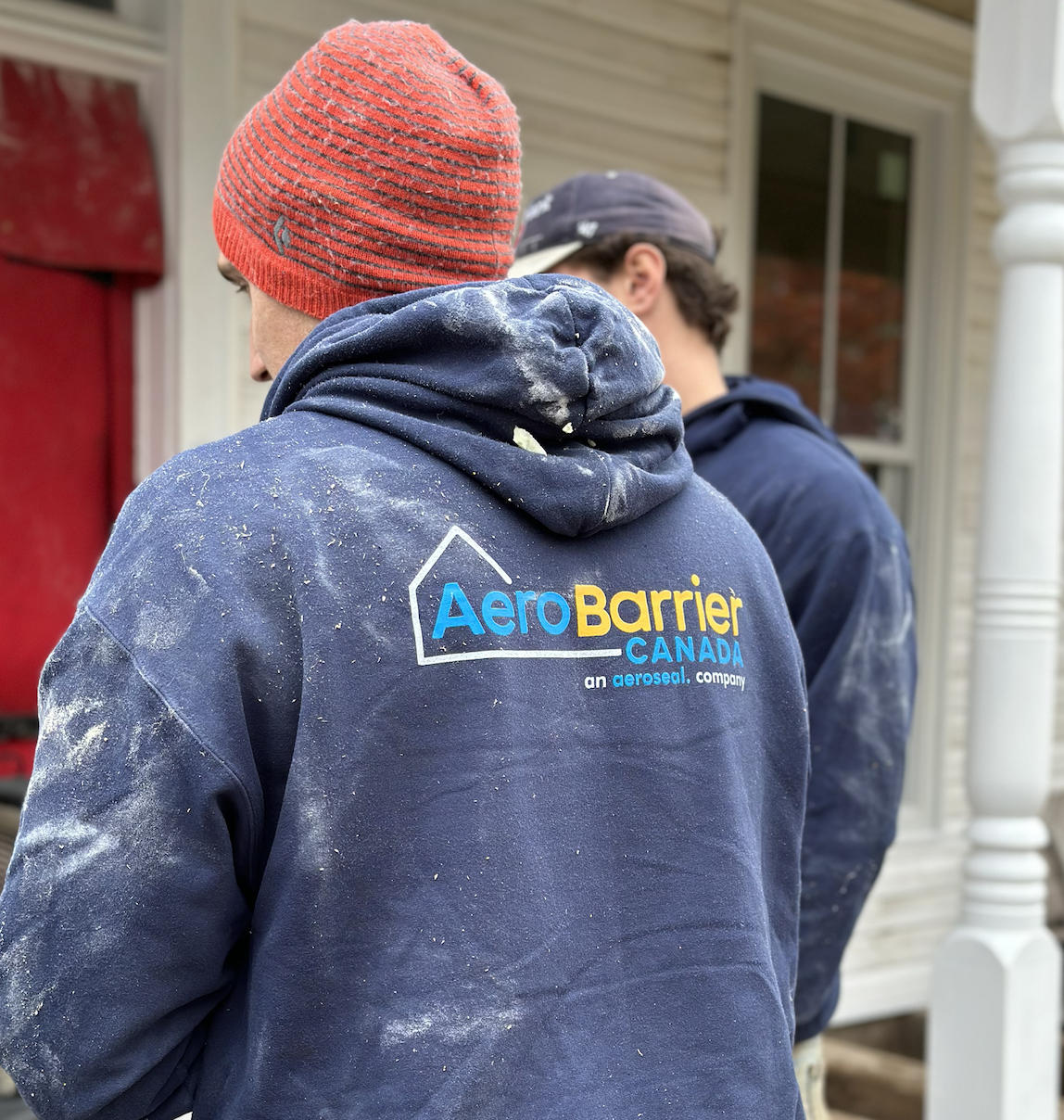


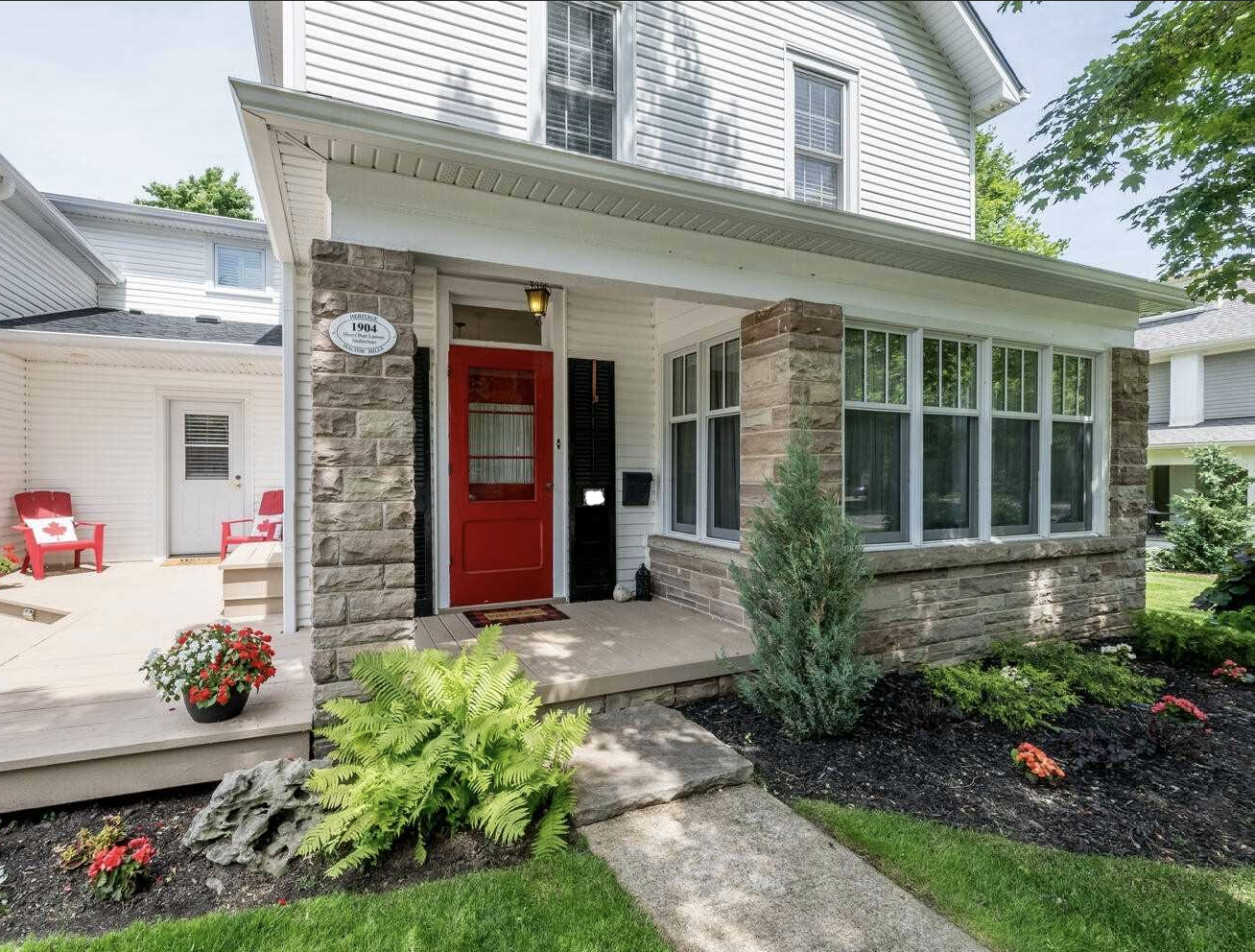
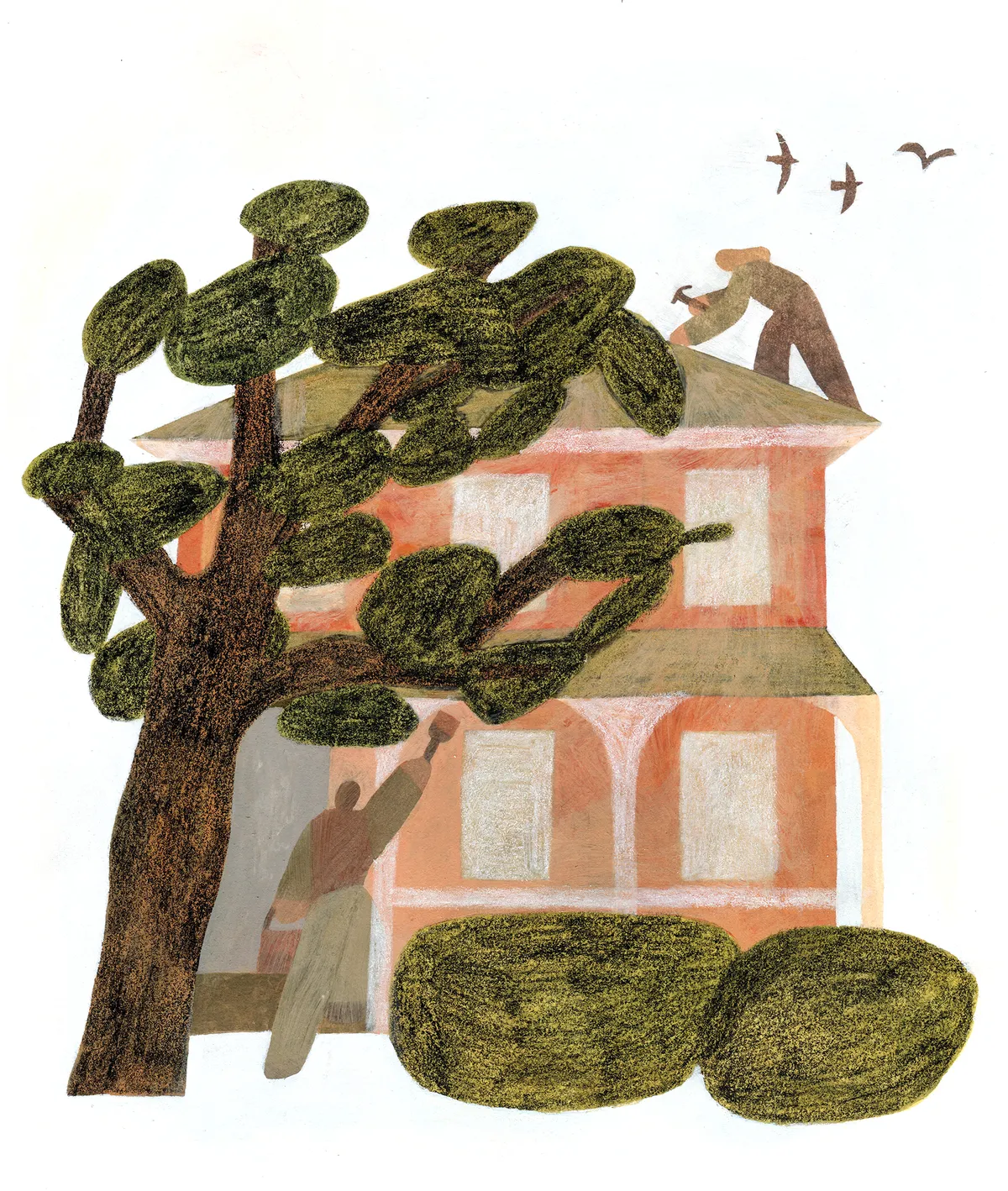
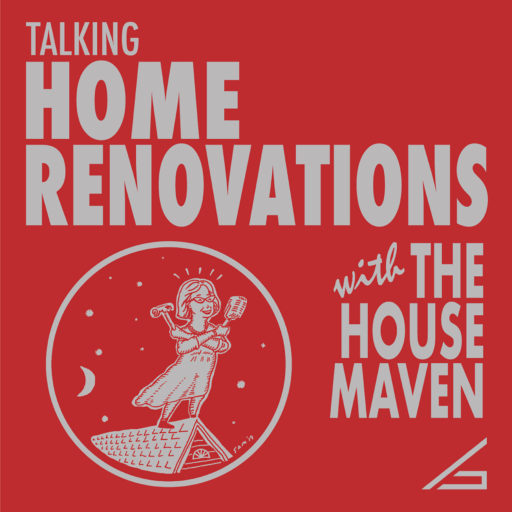
+ show Comments
- Hide Comments
add a comment